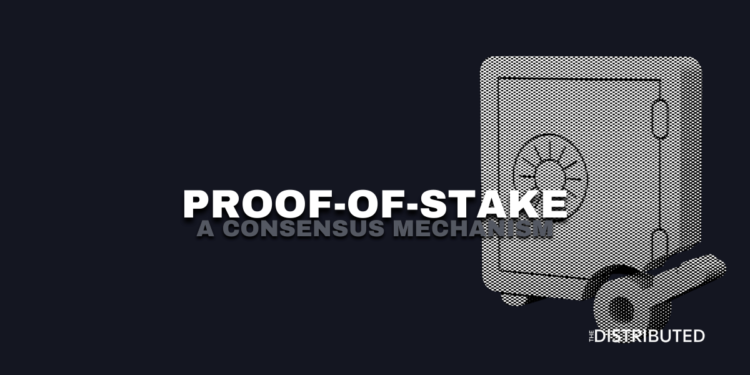What Is Proof-of-Stake (PoS)?
Proof-of-Stake (PoS) is a set of consensus mechanisms built to process transactions on a blockchain.
A validator is randomly selected to validate a transaction based on their stake in the network.
This is a direct combat against the flawed and energy-intensive cryptocurrency mining process used by proof-of-work (PoW), considering Bitcoins PoW uses more energy than various countries.[1]University Of Cambridge – Bitcoin Electricity Consumption Index PoS validators are responsible for the same thing PoW miners are; ordering transactions and creating new blocks so all nodes can agree on the state of the network, this is done through a general consensus.[2]Ethereum – Proof Of Stake (PoS)
How Does Proof-of-Stake Work?
To become a validator within a PoS network, token holders must deposit a certain amount of coins into the network through a ‘stake’ of the blockchain’s base currency. As a result, this will classify you as an active validator. The size of your stake within the network determines the likelihood of being chosen to confirm the next block, the more you have staked the higher chance you will validate the block. For example, to become an Ethereum validator you must stake 32 ETH. [3]Ethereum – How To Stake Your ETH
Whichever user is chosen from the active validator set will check the block to make sure the transactions are valid. If the validator node confirms the transactions as true then the block is added to the chain. It is worth noting that blocks are validated by more than one validator and only once a certain amount of validators confirm the block as true is it added to the chain.
Why Is Proof-of-Stake (PoS) Less Energy?
In PoS not everyone is trying to mine a new block like in PoW. As PoS only selects one random validator it uses significantly less energy in the process of finding someone to confirm a block.
Staking is substituted for computational power used in PoWs mining process, eliminating the huge amounts of energy mining consumes and the incentive to keep expanding mining farms to gain an advantage over other miners.
How Is Proof-of-Stake Secure?
The stake put up by a user incentives good behavior as a user can lose their stake for misbehaving (confirming false transactions or going offline).[4]Ethereum – Proof Of Stake (PoS) As long as the stake put up by the user is higher than the reward for being a validator, they can be trusted as they would be losing more than they make.
A 51% attack is a concern usually bought up as a concern with the PoS consensus. Within a PoS consensus, a 51% attack would mean that a single entity or organization controls over 51% of all stakes, with this they would have control over the network to alter it and add in false transactions which would not be recognized as fake as they control a majority of the validators.
But if an entity were to revert a block through a 51% stake they would in turn lose their staked coins, as stated above. These security measures are encoded within the blockchains protocol.
What Is Delegated Proof-of-Stake?
Delegated PoS (DPoS) still requires participants of a PoS system to stake their coins, but rather than being responsible for the validation of coins the responsibility is outsourced to a delegate.
Delegates then work together to form a consensus. There are usually 20-100 delegates, although every chain is different.
Delegates are chosen based on their reputation and perceived trustworthiness within the blockchain. The community has the right to vote out delegates at any time if their trustworthiness and reputation are questioned.
Pros And Cons Of Proof-of-Stake
| Pros | Cons |
|---|---|
| Staking doesn’t require hardware to run nodes, if you dont have enough crypto to stake you can join staking pools. | PoS is in an infancy stage. Its security isn’t tested like PoWs is. |
| Staking is more decentralized as more nodes doesn’t mean increased % returns, as PoW does. [5]Ethereum – Proof Of Stake (PoS) | Validators with large holdings can influence transactions |
| Energy-efficient | Some stakes require locking crypto in for a set amount of time |
Which Cryptocurrencies Use Proof-of-Stake?
The first functioning application of PoS was Peercoin, introduced in 2012.
As of 2022, the top 10 PoS cryptocurrency projects by market cap are;
- Ethereum ($ETH) – $365.7B (Note Ethereum Is Transitioning To A PoS Network)
- Solana ($SOL) – $33.6B
- Cardano ($ADA) – $31.8B
- Avalanche ($AVAX) – $20.8B
- Polkadot ($DOT) – $17.8B
- Tron ($TRX) – 6.1B
- Algorand ($ALGO) – $4.8B
- Tezos ($XTZ) – $2.8B
- EOS ($EOS) – $2.3B
- Celo ($CELO) – $1.39B
References



